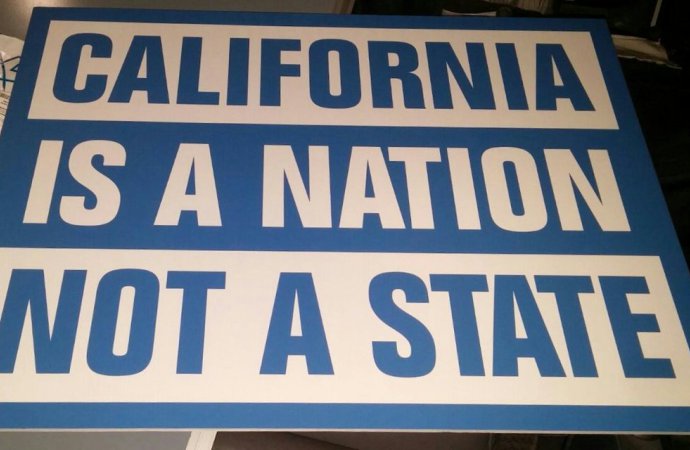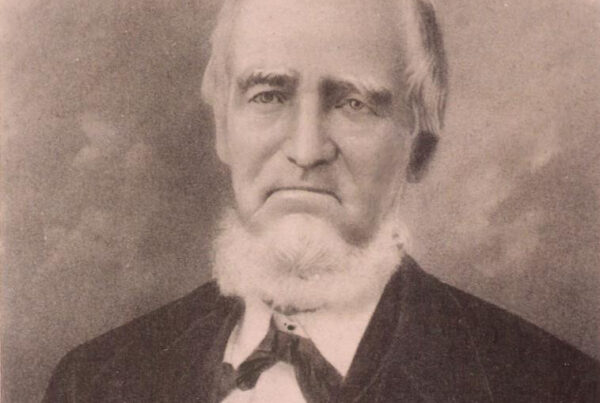Rumblings of open rebellion were in the air . . . a certain group within the state had felt for some time that their state’s wealth and resources were being unfairly used by the federal government to subsidize other areas of the nation. Moreover, it was deemed that the social values of these other areas were in direct conflict with those of their state. Later, the sense of opposition grew even stronger within the group due to the election of a new Republican president who had gained office with a minority of the national vote, and who had been utterly rejected by the voters in both their and the neighboring states. Among the reasons for the latter opposition was the president-elect’s alleged racial agenda which ran counter to the views of many in the region. The group’s solution to all of their perceived ills was to legally secede from the United States and return to their original status of a sovereign entity. While one may think that all of this certainly sounds like South Carolina in 1860, it actually refers to present-day California.
In August of last year, a political action group entitled “YesCalifornia” was created with the proposed aim of placing a state-wide referendum on the 2019 ballot calling for the legal secession of the State of California from the Union. The group summed up their rationale for such action in a thirty-three page pamphlet called the “CalExit Blue Book.” In its manifesto, “YesCalifornia” asserted that the state should stand “as an equal among nations” based on what they termed as the two fundamental truths that “California exerts a positive influence on the rest of the world” and that “California could do more good as an independent country than it is able to do as just a U. S. state.” The group further cited that the state’s population of over thirty-nine million people would make it the thirty-fifth largest nation in the world, and that its gross domestic product figure of almost $2.5 trillion would establish it as the world’s sixth largest economy . . . placing it just between the United Kingdom and France. While many in California might disagree with the group’s proposal, “YesCalifornia” claims it has at least 20,000 followers to date, and that the election of Donald Trump will bring many thousands more into the movement. The bitter irony of the entire situation is, of course, that while the South continues to be vilified for its similar legal effort to gain independence over a century and a half ago, no one now is screaming treason at the group in California . . . nor advocating that federal troops be readied to invade any new nation which a successful pro-secession vote might ultimately create.
Rather than attempting to equate the new California independence movement with the South’s actual eleven-state secession, many present-day Americans, including those in the media, merely say that such an effort would be difficult to achieve on constitutional grounds. The most widely cited example in connection with this is the 1869 Supreme Court case of Texas v. White in which the myths of an indivisible union and the impossibility of secession were permanently established in the history books by Chief Justice Salmon P. Chase, Lincoln’s war-time secretary of the Treasury. While the case before the high court merely involved litigation by the state of Texas to recover half of the ten million dollars in United States bonds that had been given to the state in 1850 to settle certain border claims, the action provided a platform upon which Chief Justice Chase could once again wave the “bloody shirt” at the defeated Confederacy. In his attack, Chase asserted that since secession was constitutionally impossible, none of the Southern states had actually left the Union and, therefore, the Confederate States of America never actually existed.
The eight-man, all-Northern Supreme Court of 1869 had a majority of Lincoln-appointed justices, and the vote was five to three behind Chase’s opinion. In that opinion, Chase stated that when Texas, and the other Southern states by inference, had become part of the United States, the state had entered into an “indissoluble relation” within a “perpetual union.” The chief justice then added that in such a union “there was no place for reconsideration or revocation, except through revolution (i.e., rebellion) or . . . consent of the states.” The latter reference has popularly, but incorrectly, come to mean an action to amend the Constitution called for by two-thirds of the states. This, however, is a complete misnomer, as such reference in Article V of the Constitution specifically states that an application by two-thirds of the state legislatures is required to convene a national convention in which any number of amendments may be offered. The Article also states at the outset that two-thirds of both houses of Congress may propose a specific amendment, and this is the method by which all of the twenty-seven Amendments to the Constitution have been presented for ratification by three-quarters of either the state legislatures or state conventions.
The entire question of creating an amendment to allow secession, either in 1860 or 2019, is, however, a complete fallacy and any action concerning the matter would be a total exercise in futility. In other words, as there is nothing in the Constitution which actually pertains to secession, there is nothing in the document which might require amending. Neither is there any prohibition in the Constitution in regard to a state revoking its initial ratification of the document. Article I of the Constitution does, of course, provide a laundry list of actions in which a state cannot engage without the express consent of Congress, actions such as those which an independent nation might carry out. However, if a state were no longer a member of the United States, such constitutional restrictions would, ipso facto, no longer apply. This fact was very clearly presented in the ably written, but largely overlooked, dissenting opinion offered by Justice Robert C. Grier of Pennsylvania in the matter of Texas v. White. His opinion first outlined how the Texas Ordinance of Secession had been duly adopted at a state convention in February of 1861 and then ratified by an overwhelming majority of Texas voters. Justice Grier further stated that the Texas action, while it may have been ill-advised, “was the sovereign act of a sovereign State.” He then went on to say that even though the verdict in regard to the state’s right to secede had been decided “by battle, . . . it did not settle the question.” It might be noted, however, that while Justice Grier, who had been on the high court since 1846, was a Northerner, he was considered to have been rather pro-slavery before the War, and had voted with the Southern majority on the Taney Court in such matters as the Dred Scott case.
California’s proposed attempt to secede from the United States and form a new nation on America’s west coast may never actually come to pass, but even if it were allowed to proceed to a vote, it would require a monumental rethinking of a major chapter in American history. For more than a century and a half the Nineteenth-Century South in general, and the Confederacy in particular, have been portrayed as a dark portion of America’s past. The true rationale for the South’s unfulfilled struggle for independence has been inundated in a sea of hateful Northern rhetoric, and those who once led the new nation of the Confederacy, as well as those who fought to defend it from Northern aggression, have all been branded as racists and traitors. For generations, the entire concept of a state’s legal separation from the Union has been termed as an unconstitutional act of insurrection, with even the initial name of the conflict being The War of the Rebellion. More recently, any representation of the Confederate States of America or its participants, be it flags, monuments or music, has become anathema to many in the nation, with frantic calls for the erasure of all vestiges of their very existence. Perhaps, however, if America is willing to accept even the basic idea of California’s secession from the United States as being legitimate, there might be a glimmer of hope that the South may, at long last, be able to receive a measure of vindication. It might also be possible that the tragic four years of death and devastation that occurred during the nation’s uncivil war will undergo a large degree of editing, with people finally beginning to realize the evil side of President Lincoln’s highly unconstitutional efforts to stifle the South’s legitimate quest for independence.







